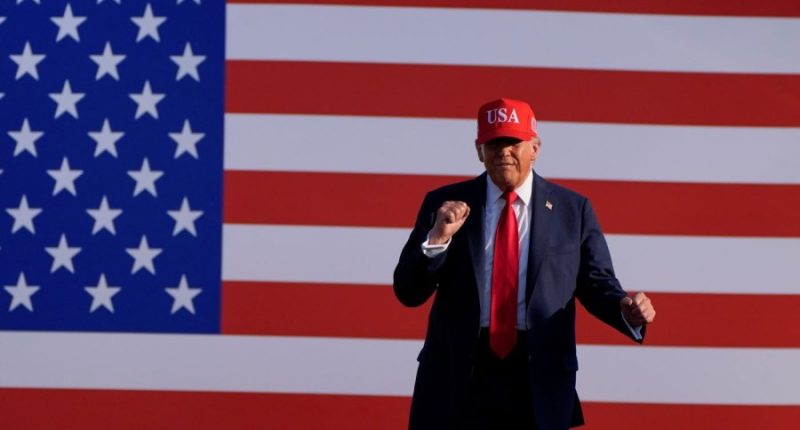Share this @internewscast.com

(The Hill) — On Monday, President Donald Trump is scheduled to dispatch the initial set of letters to inform other countries about new tariff rates; however, these tariffs will not be implemented until Aug. 1, according to White House officials.
In recent days, Trump has hinted that his administration will start notifying countries about the tariff rates they will incur for doing business in the United States. This move essentially delays attempts to negotiate trade agreements with numerous other nations after he suspended “reciprocal” tariffs for 90 days.
However, his chief economic officials stated on Sunday that the new tariff rates would not take effect for a few weeks, potentially allowing additional room for negotiation.
“President Trump’s going to be sending letters to some of our trading partners, saying that, if you don’t move things along, then, on Aug. 1, you will boomerang back to your April 2 tariff level. So I think we’re going to see a lot of deals very quickly,” Treasury Secretary Scott Bessent said on CNN’s “State of the Union.”
Bessent noted that the administration will be sending out “probably 100 letters to small countries where we don’t have very much trade.”
Trump announced Sunday that letters would begin going out at noon on Monday informing countries of the tariff rates they will have to pay to do business with the United States. He suggested some letters could be announcing “deals,” though the U.S. has only announced trade agreements or a framework of an agreement with the United Kingdom, China and Vietnam.
“We’re going to be sending letters out on Monday, having to do with the trade deals. It could be 12, maybe 15…And they’ll be going out on Monday, and a couple on Tuesday and Wednesday,” Trump told reporters Sunday. “And we’ve made deals also, so we can have a combination of letters, and some deals have been made.”
Commerce Secretary Howard Lutnick chimed in at one point to clarify the timeline.
“But they go into effect on Aug. 1. Tariffs go into effect Aug. 1, but the president is setting the rates and the deals right now,” Lutnick said.
The timing and severity of tariffs on other nations have been a constantly shifting target since Trump took office after vowing on the campaign trail to aggressively impose duties on imports. Trump has reportedly threatened tariffs on other nations, only to back off or delay their imposition.
On April 2, the president announced “reciprocal” tariffs on dozens of other countries, using trade deficits to help calculate the tariff rate. But a week later, he lowered those rates to 10 percent for 90 days as markets reacted negatively, giving time for negotiations. The 90-day window is set to expire on Wednesday.











